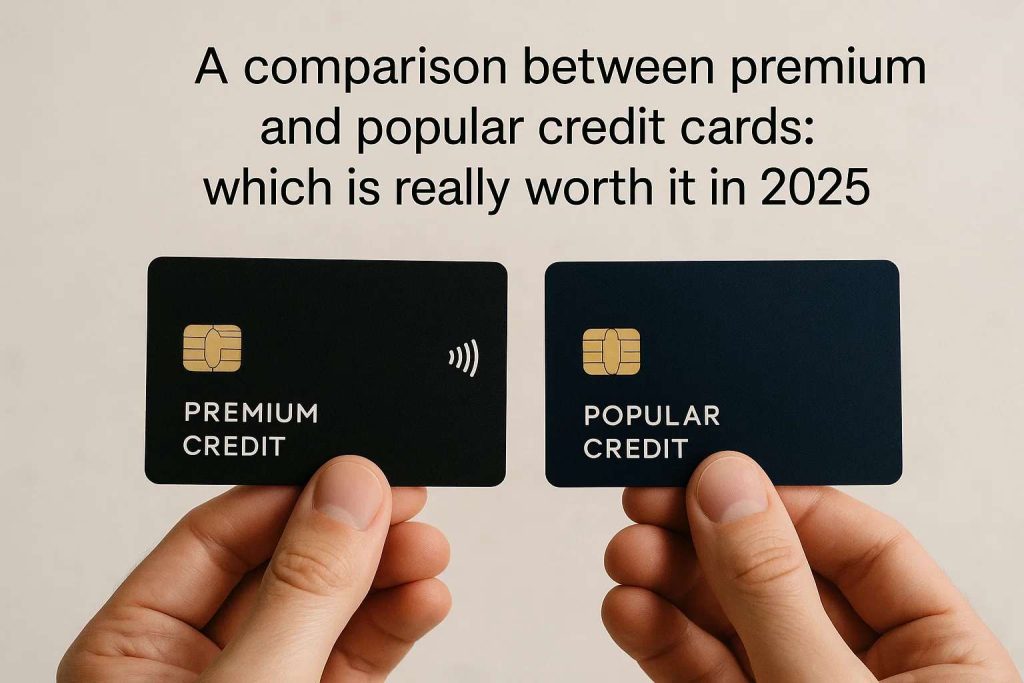When consumers think about getting a new credit card, the choice often comes down to two main categories: premium options that promise exclusive perks and higher status, and popular cards that focus on accessibility and practical rewards. This distinction has become even more relevant in 2025, as financial institutions have adapted their offerings to meet changing spending habits, digital integration, and global travel trends.
In many cases, the debate is less about which card looks better in your wallet and more about which one truly aligns with your lifestyle. Premium credit cards tend to be filled with features such as airport lounge access, concierge services, and high cashback or miles rates. Popular cards, on the other hand, prioritize affordability with lower annual fees, simplified rewards structures, and broader acceptance.
The promise of premium cards

Premium credit cards are designed to appeal to individuals who see value not just in spending power but in the experiences tied to their financial tools. In 2025, these cards often include global travel insurance, no foreign transaction fees, priority boarding on flights, and access to elite events. They are built for consumers who travel frequently, dine at high-end restaurants, and are interested in luxury experiences.
The challenge with premium cards lies in accessibility. They usually come with strict income requirements and annual fees that can surpass several hundred dollars. To truly benefit, cardholders need to take advantage of the perks consistently. If a person rarely travels, does not prioritize status-based privileges, or prefers straightforward cashback, a premium product may turn into an unnecessary financial burden rather than an asset.
Why popular cards remain strong
Popular credit cards stand out for their inclusivity and straightforward value. They are aimed at a wide audience, offering benefits that focus on everyday expenses like groceries, gas, and streaming services. In 2025, many issuers have expanded these offerings to include digital wallet compatibility, stronger fraud protection, and competitive cashback programs without requiring a high annual fee.
The main advantage is that popular cards give more people access to rewards without tying them to a high spending threshold. Even if the perks are less glamorous compared to premium cards, the overall value proposition remains strong. For someone who manages expenses carefully and prefers transparency in rewards, the simplicity of a popular card can be more financially rewarding.
Cost versus reward analysis
A central part of deciding between premium and popular credit cards is analyzing the cost-benefit relationship. Premium cards often promise higher points multipliers on categories like travel and dining, but these benefits only make sense if the cardholder is actively spending in those categories. Annual fees can be offset by perks, but this requires careful calculation.
Popular cards, with little to no annual fees, tend to provide a steady return with less risk. Cashback on everyday purchases ensures that cardholders receive consistent benefits without the pressure to maximize elite rewards. For families or individuals whose lifestyle does not revolve around luxury travel, this balance of affordability and steady value is often the smarter option.
The digital factor in 2025
One of the biggest changes influencing the credit card landscape in 2025 is digital integration. Issuers have strengthened partnerships with mobile banking apps, online platforms, and even cryptocurrency rewards. Premium cards often lead in innovation, offering features like biometric authentication, real-time expense tracking, and exclusive deals with platforms such as Amazon.
Popular cards, however, are not far behind. Many now include instant cashback crediting, mobile purchase alerts, and advanced security features that rival those of premium cards. This technological shift means that the practical gap between premium and popular cards is smaller than ever, making the choice less about innovation and more about lifestyle fit.
Which card truly makes sense in 2025
Ultimately, the decision comes down to understanding personal spending habits and financial goals. For frequent travelers, high-income earners, and those who value exclusivity, a premium credit card can still deliver significant returns in 2025. The perks, when fully utilized, can exceed the annual fee and create memorable experiences.
For the majority of consumers, however, popular cards continue to offer the best balance of cost, accessibility, and real-world benefits. They remain the go-to option for those who want financial flexibility without being tied to the obligation of maximizing luxury rewards. In 2025, the best card is not necessarily the one with the highest status but the one that adapts seamlessly to the user’s daily life.



